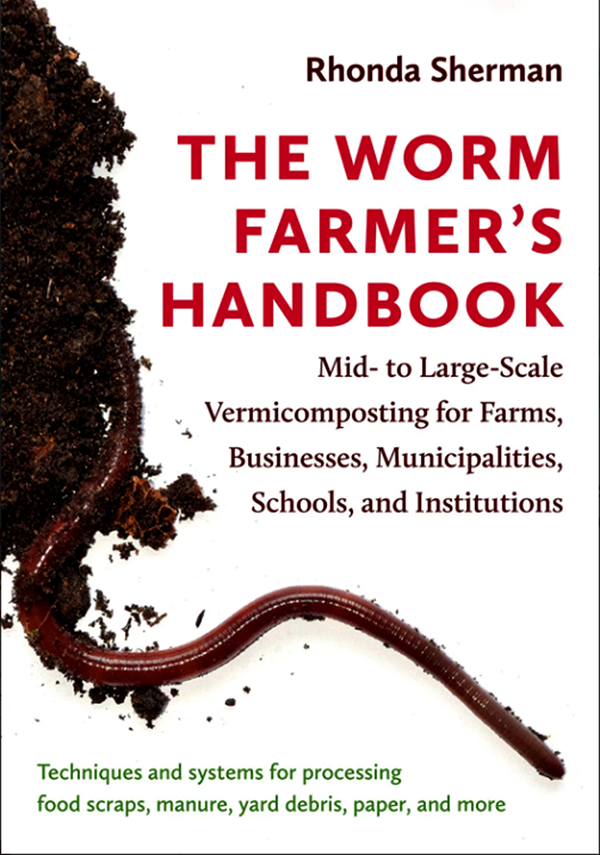
Worm castings are one of the most valuable forms of compost available. Vermicast, as the castings are often called, can enhance soil structure, provide much needed nutrients to the plants, contribute absorbent organic material and also bring in beneficial organisms. They can be used on their own or in soil mixes, and honestly there is plenty of room for more people to produce these castings on a commercial scale for farmers and home gardeners alike. That said, there is not plenty of information on how exactly to produce worm castings reliably and profitably on any scale.
Luckily, The Worm Farmer’s Handbook: Mid- to Large-Scale Vermicomposting for Farms, Business, Municipalities, Schools and Institutions by Rhonda Sherman rectifies that issue. The book describes in full and elegant detail everything required to run a successful vermicomposting operation, including the basic science and infrastructure as well as the harvesting and marketing of your first castings or worms (or both).
Before I say more, though, I don’t want to pin this book exclusively to those considering a business in worms. Certainly, as I describe below, Sherman’s book provides the information and very well might inspire people to go into this business. My own interest in this book was in adding a more efficient vermicomposting system to my vegetable farm for unused green matter and other “wastes.” This interest was beyond satisfied by Sherman’s work. To be sure, I now feel more confident that I can I have a small, productive worm operation in perfect complement to my vegetables thanks to Sherman’s guidance.

Structurally, The Worm Farmer’s Handbook is set up to make you succeed. It lays out the basic science behind how worms digest food and what their castings provide before it covers all the specifics of a worm operation. This is important primarily because, as Sherman emphasizes many times, you need to understand how worms work in a vermicast system before you can try to use them in a vermicast business. The recommendation repeated throughout the book is to start with one pound of worms and go from there—in other words, get to know the life and habits of worms before making the financial investments required for a commercial worm farm.
Why? Because there is a lot to know about the business as well as the science. Worms have a lot of specific needs, and the worm farmer has a lot to consider in terms of infrastructure, feedstock, worm sources and even marketing. You might be able to raise worms, but can you sell them?
Luckily, The Worm Farmer’s Handbook goes deep into infrastructure and different vermicomposting systems, and it likewise thoroughly covers the business side of things. In fact, one of the most captivating sections describes in detail how to design a business plan specifically for a worm business, italicized with information about marketing strategies, pitfalls that new worm farmers should avoid and a detailed explanation of regulations you might encounter.
No matter your situation or the climate where you live, this book describes possible layouts for a worm farm while showing several case studies from low- to high-tech facilities all over the world. This allows the reader to choose his or her own adventure, set to his or her own conditions.
Certainly, this book will show you the whole process—from setting up your worm bins and buying the worms to harvesting and packaging the castings. It slowly marches right through all of the requisite steps. However, I refuse to say this book is only for those interested in starting a business. This book offers relevant guidance and inspiration for many types of people, including the curious homesteader and the savvy businessperson. It’s a great read, it’s thoughtfully laid out, and I believe it will put a lot of worms to work.




